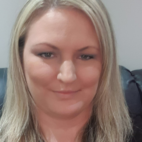Managing Assets Intelligently with Rizing
Meet the Authors
Key Takeaways
⇨ Before overhauling an EAM strategy, companies must first ensure they have a roadmap of what this initiative will look like
⇨ Organisations must ensure that there is collaboration between all relevant stakeholders – IT, finance, operations and other relevant players.
⇨ Companies should marry their line of sight future plans with their project management strategy to bolster their EAM outcomes.
Even in an increasingly digital world, physical assets are still the foundation of many businesses. Yet all too often, businesses struggle to properly manage their assets, resulting in unplanned downtime and costly delays, as well as potentially jeopardizing the health and safety of frontline workers.
For organisations struggling with Enterprise Asset Management (EAM), the experts at Rizing bolster the capabilities of their clients by helping them become an intelligent enterprise. Rizing leverages SAP Business Technology Platform (BTP) to solve key challenges facing companies in asset-intensive industries. Rizing leverages not only SAP capabilities, but its own first-hand experience with maintenance and reliability within these asset-intensive industries to implement new asset management strategies that drive tangible performance gains.
“We’ve got quite a few people that are engineers or have been in those superintendent roles and have gone through SAP implementations and then moved into the world of IT and SAP implementation. We are able to offer independent advice from that experience, but also from the multitude of projects we have done. We can talk through what is best practice, what are other people doing in the industry, and how it’s working for them,” said Martin Greaves, President of Enterprise Asset Management for the APAC region at Rizing.
Line of Sight
Before overhauling an EAM strategy – or implementing a new one altogether – companies must first ensure they have a roadmap of what this initiative will look like at every step. Businesses must keep in mind their end goals in addition to any hurdles they may face along the way. These hurdles may include regulations, redundant systems, and mergers and acquisitions. Having a partner that has laid out these kinds of plans before can help anticipate issues and ensure that projects are completed on time.
“One consideration that drives the business case for change is the line of sight from your vision and your goals through two-year objectives. That way, you see a consistent message coming through as to what you’re trying to achieve,” said Greaves.
The second key consideration for companies that want to evolve their EAM strategy is process management. Companies must be diligent in the way they define, manage, control and monitor their asset management processes. Organisations must ensure that they have visibility into maintenance workflows and operations involvement. This gives them the ability to enact preventive maintenance and continuously improve their assets and equipment while also optimizing financial outcomes. Combined with sound long-term planning, this diligent approach to asset management process oversight forms a solid foundation for a successful EAM strategy.
“If you don’t have those two things [line of sight and process management], then technology is not going to change the way you operate. Failures are generally a result of expecting technology will change the organisation. If you don’t have your vision and your processes well-defined, then you generally aren’t going to be as effective in your transformation,” said Greaves.
Data-Driven Decisions
SAP organisations that are on a journey to improve their approach to asset management inevitably find themselves on a path to realising the full value of their SAP systems. To maximise value, organisations must ensure that there is collaboration between all relevant stakeholders – IT, finance, operations and other relevant players.
Rizing’s EAM services ensure that both financial and asset management teams work in lockstep to achieve the same goals. This can only happen with high-quality data. Data is an essential piece of the EAM puzzle. Given the historical data silos plaguing asset-intensive companies, it is not surprising that the recent SAPinsider research report Elevating Enterprise Asset Management (EAM) in the Digital Age found that one of the factors impacting EAM strategies the most is complex and scattered data from multiple sources, in many different forms and making it difficult to rationalise and report. The report also uncovered that one of the top EAM initiatives is to ensure the uniformity, consistency, and quality of asset management data across the organisation. Simply put, companies must have insight into their assets and equipment to make the right decisions on how to manage it.
“What you’re trying to achieve is two things – one is around finance: making sure that we’re accurately reflecting the costs and activities against a set of assets or asset types. But the second bit is around utilising those assets to the greatest capability, making sure that those assets are working at their optimum. To do both of those things, there is a need to make sure that once you have all of the process pieces, that you can create or gather that data to then turn it into information. And that’s really where we utilise SAP’s capabilities to drive the right decisions,” said Greaves.
Data quality is especially important for organisations exploring the application of geospatial data. Companies often have difficulty locating their assets and gaining crucial environmental attributes of the surrounding area like weather or traffic issues that can make logistics a nightmare. One of Rizing’s specialties is marrying location attributes to asset data. By embedding geospatial and asset data, Rizing helps companies to locate, monitor, and maintain assets.
Continuous Improvement
SAP organisations should plan to grow and improve beyond the inception and implementations of new EAM processes and systems. Rizing offers Application Managed Services (AMS) to incorporate enhancements to processes, whether there is a new process design or revisions. It also provides upgrades based on SAP’s production release schedule. Beyond that, its experts remain available to support new and existing business users through remote training and system guidance options.
“We do a lot of continuous improvement projects, whether they have us on a retainer or we’re doing their second and third level continuous improvement programs. Pretty much in all of our project type contracts or agreements, we have defined deliverables and those drive our milestone payment processes,” said Greaves.
What This Means for Mastering SAP Members
Companies in asset-intensive industries are always looking to improve the performance of their assets and workers to reduce downtime and unscheduled maintenance while aligning their asset management best practices with broader organisational and financial goals. Yet there is no one-size-fits-all solution.
When pursuing EAM process, strategy, and system improvements, companies should consider partners like Rizing that offer real-world experience along with the technological expertise to maximize value within SAP systems. These partners can help companies lay out a roadmap, while garnering buy-in from essential stakeholders from all parts of the business. When enterprises fuse long-term vision with expert process management strategies, they are able to solve mission critical asset management problems and ultimately help their organisations run more efficiently and profitably.







